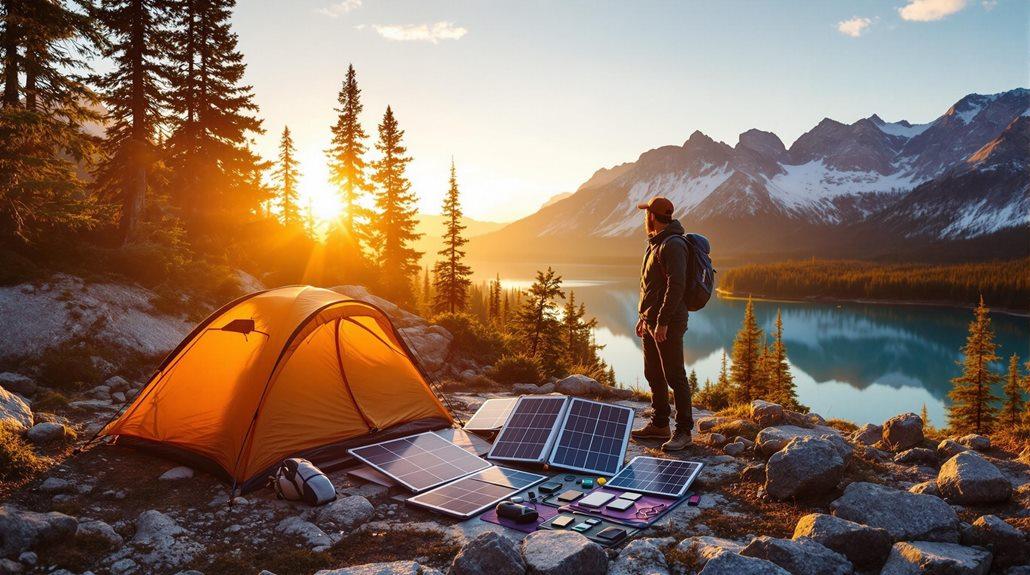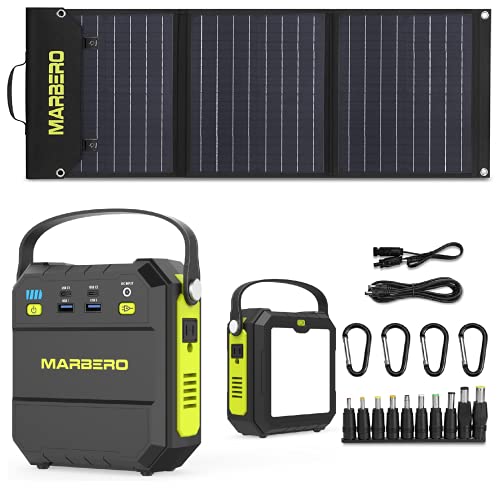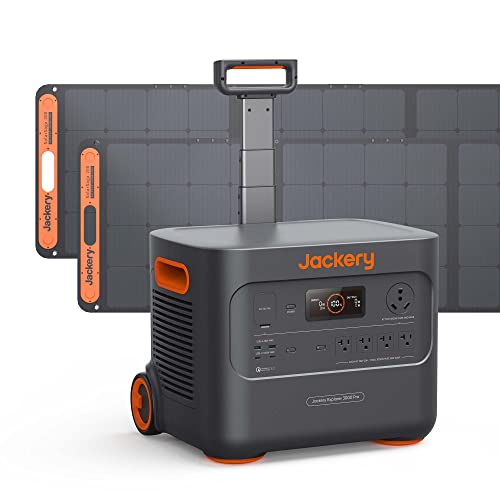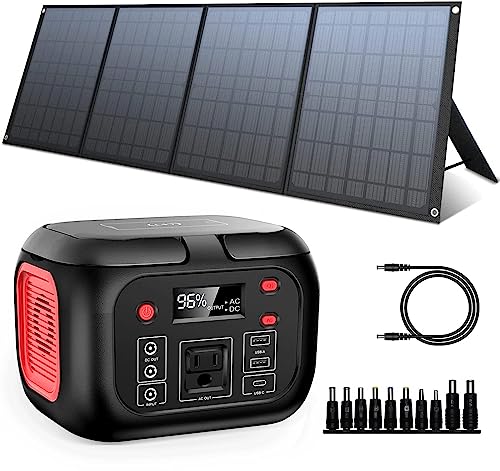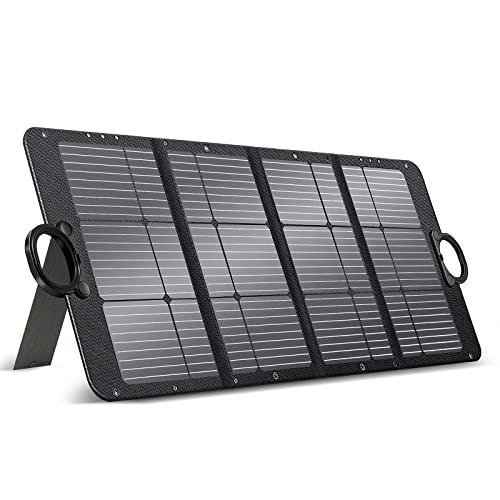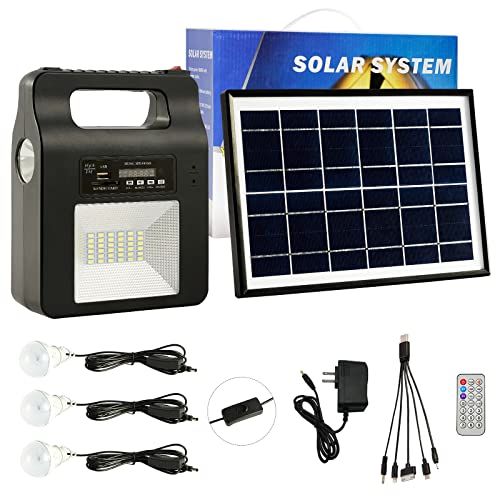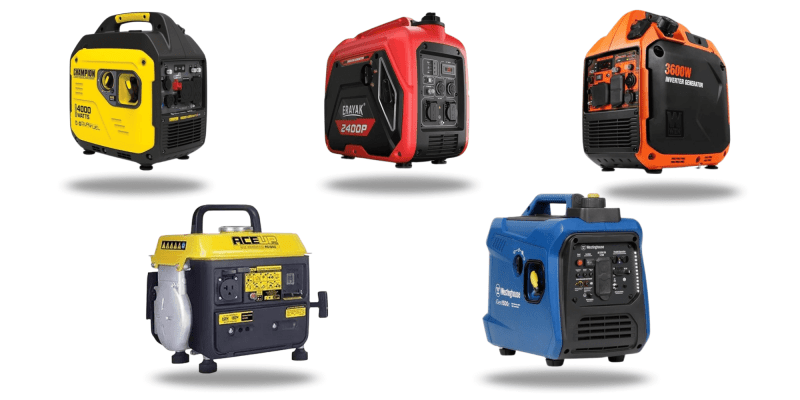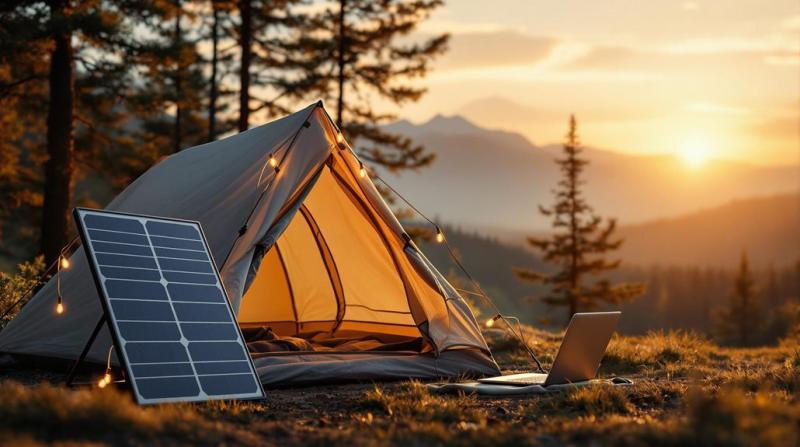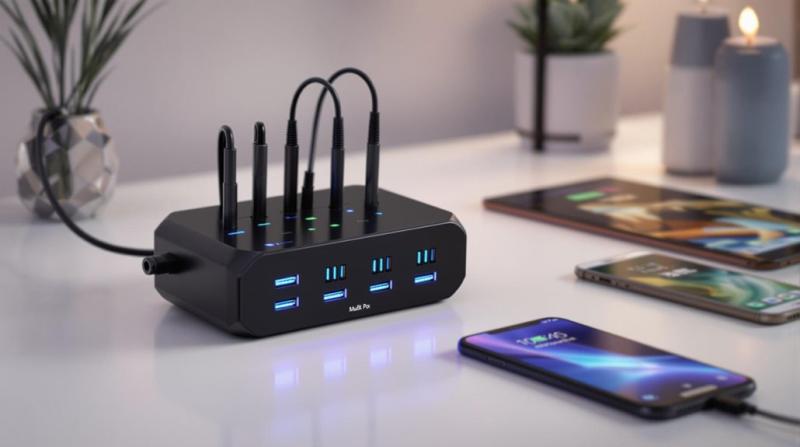To power your wilderness adventure with solar, you'll need a complete system that includes monocrystalline panels (50-200 watts), a power station (1,000-2,000 watts), and lithium iron phosphate batteries for storage. Choose panels with 15-22% efficiency ratings and mount them where they'll receive direct sunlight, ideally at an angle matching your geographical location. You'll want to pair this with an MPPT charge controller and appropriate connection ports for your devices. Keep panels clean and monitor battery levels to maintain peak performance. Remember that cloud cover can reduce output by 25-90%, so proper sizing and backup planning are essential. The following sections will guide you through each component's detailed specifications.
Key Takeaways
- Choose a 50-200 watt monocrystalline solar panel system with lithium iron phosphate batteries for optimal wilderness power generation.
- Position panels in direct sunlight with adjustable tilt mechanisms, considering geographical sun angle for maximum energy capture.
- Protect equipment with weatherproof connection points and carry backup power storage for cloudy conditions.
- Use MPPT solar charge controllers and verify device compatibility before connecting to prevent damage.
- Prioritize essential device charging and avoid complete battery drainage to maintain power availability throughout your adventure.
Selecting The Right Solar Setup
Wilderness power needs demand careful consideration when choosing your solar setup. When selecting panels, you'll want to focus on efficiency ratings between 15-22% to guarantee peak power generation during your outdoor adventures. Popular models like the Jackery Explorer 1000 offer reliable performance for extended trips with its 1,002Wh capacity. Your solar panel setup should be lightweight and portable, typically weighing between 2-5 pounds, making it easy to transport through rugged terrain.
To help you choose the right configuration, start by calculating your daily power needs. Match your requirements with panels rated between 50-200 watts, and verify they're compatible with 12V inverter systems for seamless integration with your camping electronics. Monocrystalline panels are particularly well-suited for wilderness use, as they offer superior performance in variable outdoor conditions.
Consider flexible panel options that can be easily packed and deployed in different environments. These panels should provide reliable power generation while maintaining durability for outdoor use. When evaluating your options, factor in both the physical space available in your pack and the specific power requirements of your essential devices, guaranteeing your selected setup delivers consistent performance throughout your wilderness journey.
Essential Power Requirements For Camping
A successful camping experience with solar power begins with accurately calculating your daily energy requirements. You'll need to create a detailed list of all your electronic devices and their wattage needs to determine how much power you'll consume during your outdoor adventure. Start by identifying essential items like lights, phones, cameras, and any specialized camping equipment that requires electricity. Modern high-capacity power stations can deliver over 2,000 watts of output to support multiple devices simultaneously, making them ideal for extended trips.
To match these power needs, you'll want to select a solar setup that can handle your daily consumption. Most camping scenarios require between 50-200 watts of solar capacity, and you'll need to pair this with an appropriately sized power station for storage. Consider investing in a charge controller to regulate the power flow and protect your batteries from damage. For reliable performance, look for battery storage with 50-100 amp-hours of capacity, which will keep your devices running during cloudy periods or nighttime.
When choosing your solar panels, opt for portable, foldable designs that weigh between 2-5 pounds. These configurations offer flexibility in positioning and setup, helping you maximize sun exposure while maintaining mobility in various wilderness environments.
$229.98
$154.99
4.5 out of 5 starsMARBERO Solar Portable Power Station + Panel Kit
The ultimate eco-friendly power solution for all your adventures
Product information
Product Review Score
Product links
Mounting Options and Panel Placement
Successful solar power generation in the wilderness depends heavily on how you mount and position your panels. When choosing the best solar panels for your outdoor setup, you'll need to evaluate whether rigid or flexible options better suit your needs. Rigid aluminum panels offer stability and durability for permanent mounting on camper roofs, while portable solar options with flexible panels work well on curved surfaces like boat decks or tent tops. High wattage ratings between 600-1000 watts will guarantee peak power output for your mounted panels, especially during peak sunlight hours.
To maximize your solar system's efficiency, you'll need to make sure you're using the right mounting hardware for your situation. Whether you opt for adhesive backing, bolt-on frames, or adjustable brackets, your choice should match both your surface type and terrain conditions. Contemplate your geographical location's sun angle when positioning your panels, as this directly impacts energy production. You can enhance performance by installing adjustable tilt mechanisms, allowing you to reposition your panels throughout the day to follow the sun's path. This simple adjustment can substantially boost your power generation, securing you'll have reliable energy for your wilderness adventures.
Solar Performance In Different Conditions
Environmental factors play a pivotal role in determining your solar setup's performance during outdoor adventures. When you use solar power in the wilderness, you'll need to account for weather patterns, seasonal changes, and geographical location to maximize your electrical system's efficiency. Many portable power stations support solar charging with built-in controllers for enhanced efficiency.
You'll generate the most energy during clear, sunny days when your panels receive direct sunlight. However, cloud cover can reduce your system's output by 25-90%, depending on thickness. In winter months, shorter days and snow coverage might limit your power generation, so you'll want to plan accordingly and perhaps pack additional panels or batteries.
Temperature also affects performance - contrary to what you might expect, solar panels actually work more efficiently in cooler conditions. When temperatures rise above 77°F (25°C), you'll notice a slight decrease in power output. Altitude can work in your favor, as thinner air allows more sunlight to reach your panels, potentially increasing how much energy you produce.
To optimize performance, regularly clean your panels of dust, leaves, or snow, and adjust their angle throughout the day if possible. Remember to monitor your power consumption and match it to available sunlight hours.
Battery Storage and Management Tips
Proper battery management fundamentally determines the success of your solar-powered wilderness setup. When choosing a power station for your outdoor adventures, you'll want to focus on deep-cycle batteries, particularly lithium iron phosphate (LiFePO4) models. These batteries are able to charge and discharge repeatedly while maintaining excellent performance in challenging outdoor conditions. Modern lithium-based power stations offer superior energy density up to 250 Wh/kg, making them ideal for portable applications. A quality unit should maintain peak efficiency between 32°F to 104°F for peak performance.
To guarantee your battery system works efficiently, install a solar charge controller with MPPT technology. This component maximizes how much energy flows into your batteries and prevents damage from overcharging or undercharging. Before your trip, calculate your daily power needs by listing all devices you'll use and their energy consumption. This helps you select the right battery capacity with enough reserve power for cloudy days.
Keep your batteries performing supremely by following essential maintenance practices. Clean the terminals regularly, store your power station at appropriate temperatures, and avoid completely draining the batteries. These simple steps markedly extend your battery's lifespan and confirm reliable power throughout your wilderness adventure. Remember, proper battery care means you'll have dependable energy when you need it most.
$2,399.00
4.31 out of 5 starsJackery Solar Generator PRO 400W with 2x Panels
A Reliable and Powerful Off-Grid Energy Solution for All Your Adventures
Product information
Product Review Score
Product links
Connecting Devices To Solar Power
Connecting your devices to a solar power setup requires understanding both power requirements and compatibility. First, check your device's voltage and amperage needs, which you'll typically find on the power adapter or in the user manual. Most smartphones and tablets work well with a standard 5V USB output, while larger devices might need different specifications.
Your solar charger should include multiple connection options, including USB ports for small electronics and AC outlets for larger items. When setting up LED lights for your camp, connect them directly to your power station using the appropriate cables, and consider using a voltage regulator if needed. You'll want to prioritize essential devices and monitor their power consumption to avoid draining your stored energy too quickly.
For supreme performance, connect devices during peak sunlight hours when your solar panels are generating maximum power. Keep spare charging cables organized and protected from the elements, and always use weatherproof connections when possible. If you're using a power station as an intermediary, make certain it's fully charged before nightfall to guarantee continuous power for your evening needs.
Frequently Asked Questions
Can Solar Panels Attract Lightning During Thunderstorms While Camping?
While solar panels don't specifically attract lightning, you'll want to take precautions during storms. To minimize storm risk, place your panels at ground level rather than elevated positions, and maintain a safe distance from your tent. For lightning protection, you can temporarily disconnect and store your panels when thunderstorms approach. If you're using a permanent setup, consider installing proper grounding equipment to protect your solar investment.
How Do Wild Animals Typically React to Reflective Solar Panel Surfaces?
Like mirrors in nature's playhouse, solar panels can spark animal curiosity in unexpected ways. You'll find that most wildlife initially shows interest in panel reflection, but they typically adapt quickly. While some animals may briefly investigate the unfamiliar surfaces, their natural wildlife perception usually leads them to recognize the panels aren't threats or food sources. You can reduce animal interest by installing panels at angles that minimize glare and keeping your campsite tidy.
Will Charging Devices With Solar Power Damage Their Batteries Over Time?
Using solar power to charge your devices won't damage their batteries any more than standard wall charging. Your battery's longevity depends primarily on charging cycles and usage patterns, not the power source. While solar charging may be slower and less consistent than wall outlets, it doesn't create additional solar strain on your battery. You'll want to verify your solar setup includes proper voltage regulation to protect your devices, just like with conventional charging methods.
Does Sunscreen Residue on Solar Panels Affect Their Charging Efficiency?
Yes, sunscreen residue can markedly reduce your solar panel's charging efficiency. When you handle panels with sunscreen-covered hands, the panel grime creates a film that blocks sunlight from reaching the photovoltaic cells. You'll want to clean any solar residue or sunscreen buildup regularly using a gentle, non-abrasive cleaner and microfiber cloth. Just like dirty windows block light, dirty panels can't efficiently convert sunlight to power for your devices.
Can Solar Panels Generate Enough Power to Run a Small Camping Refrigerator?
Yes, you can power a camping fridge with solar panels, but you'll need to match your setup to the fridge's energy requirements. Most camping fridges need 40-60 watts per hour, so you'll want at least a 100-watt panel and a reliable battery to handle nighttime battery drainage. For best results, focus on proper panel placement in direct sunlight and consider getting a larger panel or additional batteries for cloudy days.
